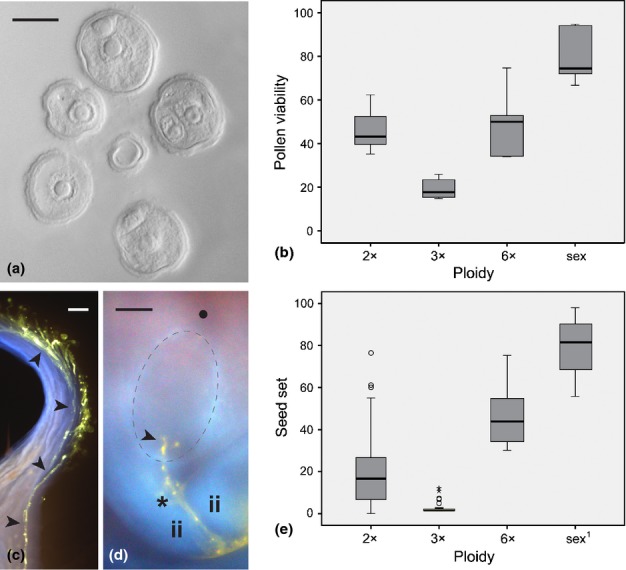Fig 2.

Male gametophyte development, viability, functionality and compatibility with female gametophytes to set seeds in Ranunculus. (a) Male gametophytes of a triploid hybrid during flowering showing aborted and immature to mature microspores (carrying one nucleus or two, with the generative one adsorbed to the inner microspore wall). (b) Box-and-whisker diagram for the proportion of viable male gametophytes at flowering among ploidy levels of interspecific hybrids and sexual parentals. Boxes represent first and third quartiles, and the band inside each box indicates the median. Whiskers correspond to 95% CI. Outliers and extreme values are represented by circles and stars, respectively. (c) Growing pollen tubes of functional male gametophytes on flower stigma and style (arrowheads) 120 min post-pollination; (d) ovule at flowering, 180 min post-pollination, showing the path of the pollen tube toward the embryo sac (whitish delineated) between integuments and the apparent delivery of male gametes into the synergids and egg cell zone (arrow). (e) Box-and-whisker diagram for the proportion of seeds formed by interspecific hybrids and sexual parental species among ploidy levels. Boxes, whiskers and outliers are represented as in (b). Genotypes: (a) G4; (c) G7; (d) J33. ii, inner integuments; •, chalazal pole; *, micropylar pole. Bars: (a) 10 μm; (c, d) 30 μm. 1Data from Hörandl (2008).
